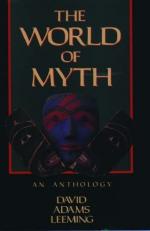
|
| Name: _________________________ | Period: ___________________ |
This quiz consists of 5 multiple choice and 5 short answer questions through Part III: Chapters 1-4.
Multiple Choice Questions
1. How do the Greeks explain the presence of winter?
(a) Hades conquers earth.
(b) Demeter mourns for her daughter.
(c) Hera goes away on a trip.
(d) Zeus bans fertility.
2. How does Leeming define cosmic myth?
(a) Myths that define the history of the earth.
(b) Myths that define the constellations.
(c) Myths that define the order of the world.
(d) Myths that explain the location of different stars.
3. How does Leeming describe the trickster gods?
(a) As male and promiscuous.
(b) As half-goat.
(c) As young and unmarried.
(d) As gods of craft as well.
4. What does Leeming say suggests a desire to escape from earthly existence?
(a) The evolution of morals and laws.
(b) The transition from struggle and creation to fall from grace.
(c) The development of technology.
(d) The transformation from instinctual to moral consciousness.
5. What problem or question does Leeming say cultures were addressing in cosmogonies?
(a) The question of birth from nothing.
(b) The question of how man rose to the summit of power over nature.
(c) The question of how life forms evolved and differentiated.
(d) The question of why men are stronger than women are.
Short Answer Questions
1. What does Leeming say the Great Mother represents?
2. What does Leeming say cosmogonies represent?
3. How does Leeming define cosmology?
4. What evidence does Leeming cite that suggests the presence of whites in Africa?
5. Whose behavior does Leeming say explains the behavior of the Olympian gods in the Greek pantheon?
|
This section contains 296 words (approx. 1 page at 300 words per page) |

|




